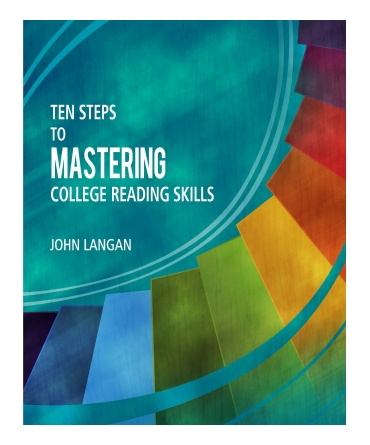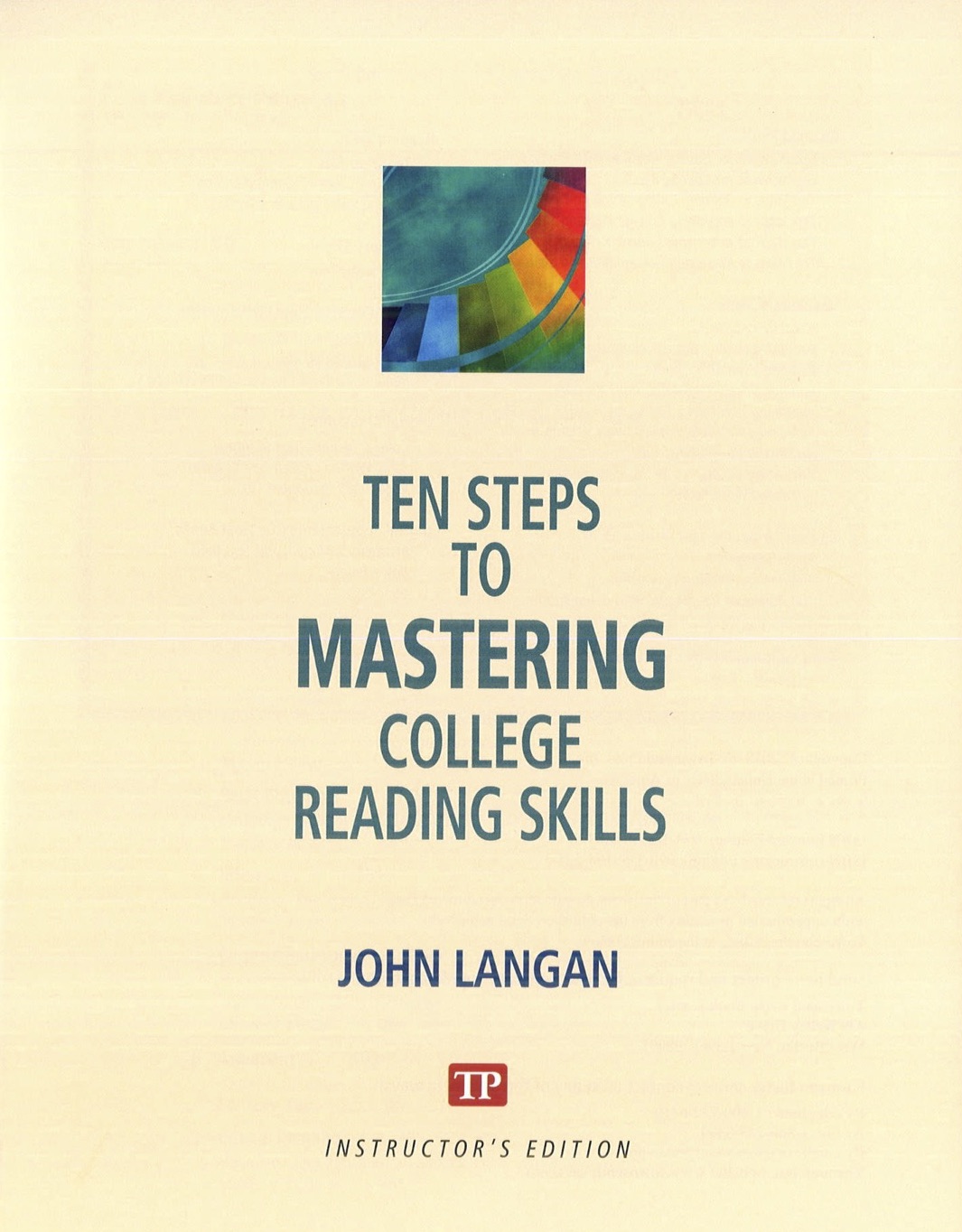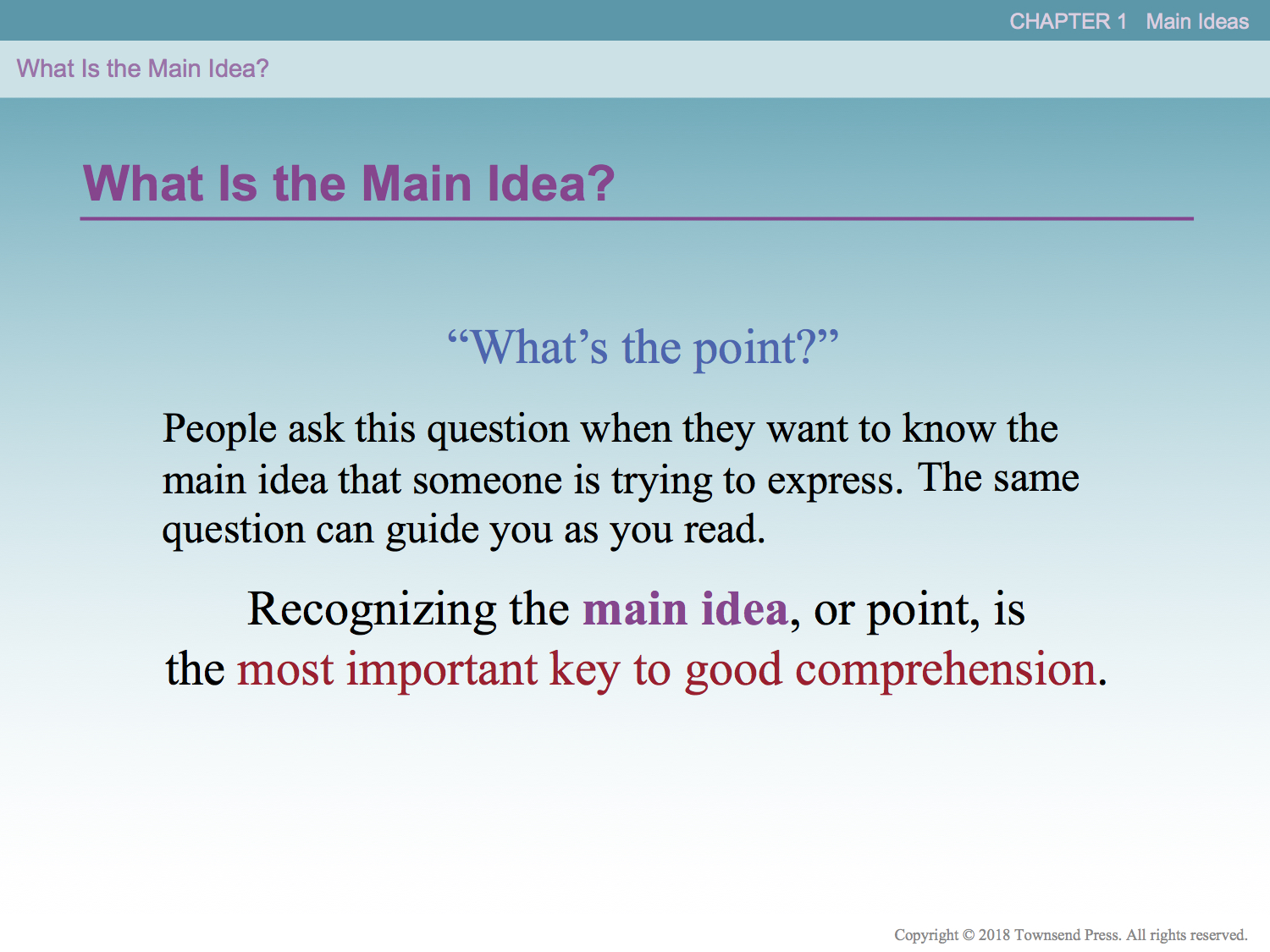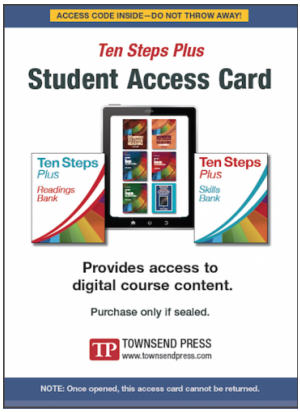Ten Steps to Mastering College Reading Skills

Overview
Ten Steps to Mastering College Reading Skills (titled Ten Steps to Advanced Reading in earlier editions) is the most advanced title in the popular Ten Steps college reading skills series. It can serve as an independent advanced reading text or as a sequel (or a second-semester alternative) to Ten Steps to Improving College Reading Skills or Ten Steps to Advancing College Reading Skills. Get a full brochure here.
More information
Educators, please click here to request a desk copy.
Key Features of the Ten Steps Series
Focus on the basics. The book is designed to explain, in a clear, step-by-step way, the essential elements of each skill. Many examples are provided to ensure that students understand each point. In general, the focus is on teaching the skills—not just on explaining them and not just on testing them.
Frequent practice and feedback. Because abundant practice and careful feedback are essential to learning, this book includes numerous activities. Students can get immediate feedback on the practice exercises in Part One by turning to the limited answer key at the back of the book. The answers to the review and mastery tests in Part One, the reading questions in Part Two, and the relationships and combined-skills tests in Part Three are in the Instructor’s Edition and the Instructor's Manual.
High interest level. Dull and unvaried readings and exercises work against learning. Students need to experience genuine interest and enjoyment in what they read. Teachers as well should be able to take pleasure in the selections, for their own good feeling about them can carry over favorably into class work. The readings in the book, then, have been chosen not only for the appropriateness of their reading level but also for their compelling content. They should engage students and teachers alike.
Ease of use. The logical sequence in each chapter—from explanation to example to practice to review tests to mastery tests—helps make the skills easy to teach. The book’s organization into distinct parts also makes for ease of use. Within a single class, for instance, instructors can work on a particular skill in Part One, review another skill with one or more mastery tests, and provide variety by having students read one of the selections in Part Two. The limited answer key at the back of the book also makes for versatility: the teacher can assign parts of some chapters for self-teaching. Finally, the mastery tests—each on its own tear-out page—and the combined-skills tests make it a simple matter for a teacher to test and evaluate student progress.
Integration of skills. Students do more than learn the skills individually in Part One. They also learn to apply the skills together through the reading selections in Parts One and Two as well as the combined-skills tests in Part Three. They become effective readers and thinkers through repeated practice in applying a combination of skills.
Thinking activities. Thinking activities—in the form of outlining, mapping, and summarizing—are a distinctive feature of the book. In addition, four discussion questions at the end of each reading selection encourage student reflection, as do the writing activities that are provided for each selection.
Available electronic resources. This text can be purchased with Ten Steps Plus, a subscription-based collection of digital materials including interactive exercises, mastery tests, assessments, bonus readings, instructional videos, eBooks* of the entire Ten Steps Series, and more than 100 Townsend Library titles. Click here to learn more about subscription options, including discounted digital/textbook bundles.
*eBooks are not included with Ten Steps Plus LE (Limited Edition).
Efficacy Report. Results from a study that examined the impact of the Townsend Press Ten Steps Series on students' reading skills in higher education developmental reading courses are available (full report, short report). This study was conducted by an independent research firm.

Table of Contents
Preface: To the Instructor
Introduction
- How to Become a Better Reader and Thinker
- Some Quick Study Tips
- Notes on Vocabulary in Context
- The Power of Reading
PART ONE Ten Steps to Mastering College Reading
1 Main Ideas
Reading: Hooked on Our Smartphones
Mastery Tests2 Supporting Details
Reading: Alcohol
Mastery Tests3 Implied Main Ideas
Reading: “Extra Large, Please"
Mastery Tests4 Relationships I
Reading: Skills of Effective Face-to-Face Conversationalists
Mastery Tests5 Relationships II
Reading: Hoover and Hard Times
Mastery Tests6 Inferences
Reading: The Ugly Truth About Beauty
Mastery Tests7 Purpose and Tone
Reading: Self-Help Books
Mastery Tests8 Argument
Reading: Diamonds Aren't Forever
Mastery Tests9 Critical Reading
Reading: The Truth About Fake News
Mastery Tests10 Active Reading and Study
Reading: Personal Conflict Styles
Mastery Tests
PART TWO Ten Reading Selections1 The Paradox of Progress
2 Understand Your Nervousness
3 Consequences of Social Class
4 Types of Nonverbal Symbols
5 Cardiovascular Disease Risk Factors
6 Exploring the World of Business and Economics
7 Free College: Why Not Now?
8 Abusive Relationships among the Young
9 A Civil War Soldier's Letter to His Wife
10 The Spider and the WaspPART THREE Relationships and Combined-Skills Tests
1 Relationships Tests
2 Combined-Skills Tests
PART FOUR Readings in Science and Mathematics
1 Doing Well in Science and Mathematics
2 The Human Body: An Orientation
3 Introduction to Statistics Mario F. Triola
Appendixes
Pronunciation Guide
Writing Assignments
Limited Answer Key
Changes in the New Edition
- A new title. The previous title, Ten Steps to Advanced Reading, has been replaced with a title expressing more clearly that the final book in the TP Reading Series will help students achieve a level of reading independence and mastery.
- More cartoons and other graphics. Because so many students today are visual learners, there are additional illustrations to help introduce or reinforce points made in the book.
- New readings. The book includes four new readings that speak to today's concerns. See, for example, "Hooked on Our Smartphones" and "The Truth about Fake News."
- Expanded practice materials. Practice materials have been freshened or expanded throughout. For example in Part Three, there are now five additional "Combined-Skills Tests."
- A greater variety of textbook selections. Content areas include psychology, history, journalism, interpersonal communications, mathematics, biology, and anatomy and physiology. (See the list of all textbook selections on page vii, which follows the table of contents.)
- Expanded support. Additional practice exercises, tests, and an eBook of this text are available to students with a subscription to Ten Steps Plus in TP's Learning Center.
Supplementary Materials
Ten Steps to Mastering College Reading Skills includes the following supplements:
Print Supplement
 This text features an annotated Instructor’s Edition, which is identical to the student book except that it provides answers to all practices and tests. The Instructor's Edition also includes useful hints and annotations to help teachers scaffold lessons. The Instructor's Edition is free by request to educators with a class adoption of 20 or more books.
This text features an annotated Instructor’s Edition, which is identical to the student book except that it provides answers to all practices and tests. The Instructor's Edition also includes useful hints and annotations to help teachers scaffold lessons. The Instructor's Edition is free by request to educators with a class adoption of 20 or more books.
Digital Supplements
1. An Instructor’s Manual and Test Bank includes teaching suggestions, a model syllabus, and readability levels for the text and its reading selections. Available to educators in the Learning Center, this PDF supplement also contains four additional mastery tests for each of the skills taught in Part One—all on sheets that can be copied or printed for use with students.
 2. PowerPoint presentations have been crafted to teach key skills and concepts directly to students. These PowerPoints are available to instructors in the Learning Center and can be used with or without the text.
2. PowerPoint presentations have been crafted to teach key skills and concepts directly to students. These PowerPoints are available to instructors in the Learning Center and can be used with or without the text.
 3. Ten Steps Plus is a subscription-based collection of powerful digital resources that teach college reading skills. Based on the proven pedagogy of the Ten Steps Series, Ten Steps Plus includes interactive exercises, mastery tests, assessments, and instructional videos to equip students for success in the classroom and beyond. Click here to learn more about Ten Steps Plus.
3. Ten Steps Plus is a subscription-based collection of powerful digital resources that teach college reading skills. Based on the proven pedagogy of the Ten Steps Series, Ten Steps Plus includes interactive exercises, mastery tests, assessments, and instructional videos to equip students for success in the classroom and beyond. Click here to learn more about Ten Steps Plus.
To Obtain Supplements
Print supplements can be obtained quickly by contacting Townsend Press. Call us toll-free at 800-772-6410 or e-mail our customer support team at (cs@townsendpress.com). Digital supplements are free to educators with a valid instructor account in the Learning Center. Get yours here.
